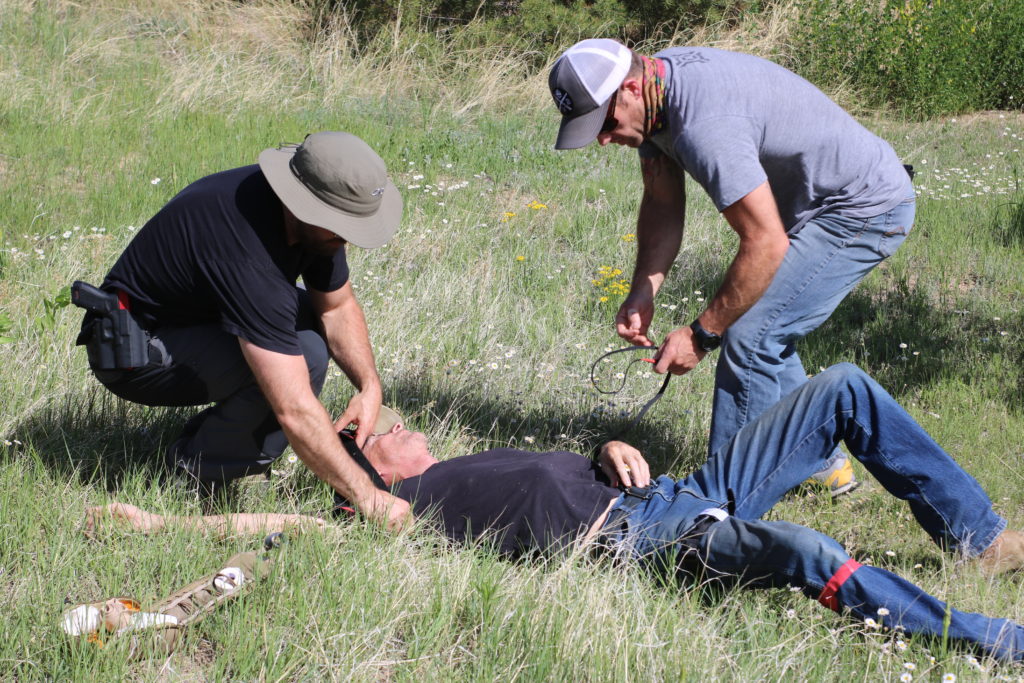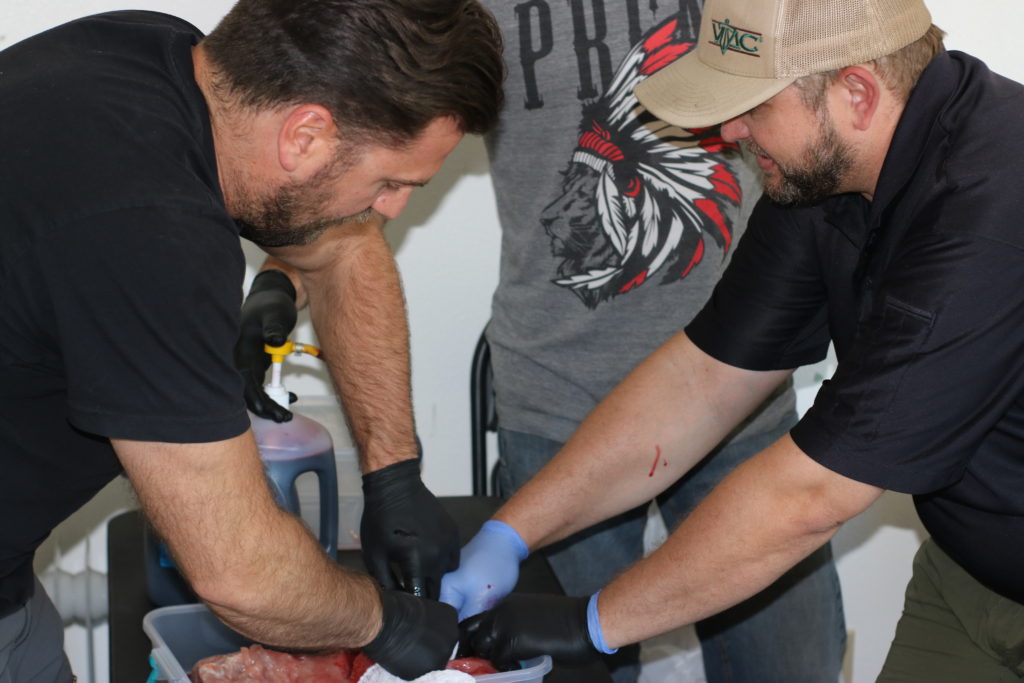Over the past couple of years I’ve noticed a sharp increase in the popularity of small medical/trauma kits, media coverage of the contents, use, and procedures for immediate care (articles, You Tube), and classes that are offered to teach these subjects. The norm in the past was a basic first-aid/first responder course with CPR (cardiopulmonary resuscitation). Above that were the different EMT (Emergency Medical Technician) levels of care as well (BLS-basic life support, and ALS-advanced life support). Say you have a victim next to you with a sucking chest wound from a bullet, and they state they are having a hard time breathing. Now what? With the addition of modern techniques and equipment available to the civilian market (on-line or in-store purchase without a specific prescription or license/certification), and a need for a bridge between basic first-aid and EMTs given the increase of and types of violent occurrences, there are more programs available that don’t require a lot of time to attend. In these programs, the students will learn important life-saving techniques for critical life-threatening trauma such as but not limited to: GSWs (gunshot wounds) and stabbings/impalement. Most come with a non-EMT certification such as TCCC (Tactical Combat Casualty Care) which is an approximately 16 hour class given over the course of two days. Another term for this is CLS, or Combat Life Saver. While this type of program is not a BLS or ALS EMT certification, I believe it serves a positive purpose while waiting for higher trained personnel and equipment to arrive. The goal is to prevent immediate death by: exsanguination (severe blood loss) and other causes of oxygen depletion such as; airway issues or decreased lung capacity. Even if you are already a licensed EMT of the BLS or ALS levels, this type of training/certification is a great addition. However, keep in mind that your local/state EMS protocols may take precedence over the additional training and techniques taught in a TCCC class if you’re operating under an EMS service provider’s/company’s license. Be sure to clarify this issue, so that you are not operating beyond your scope of practice.

So what’s the purpose of this series? My primary goal is to provide facts along with my opinions regarding; equipment, specific scenarios (that may be applicable to others as well), and what one may do to help. This series is in no way meant to be an instructional guide, nor to be used as a substitute for actual training provided by a competent/certified instructor. We Like Shooting, its writers, staff, and affiliates are not responsible for your decisions and/or actions. You the reader are responsible for your own actions, and for receiving the appropriate training by a competent/certified instructor. Never attempt an invasive procedure or treatment without professional training and evaluation. Good for reference, not for application. I also suggest that you treat any other articles or You Tube videos the same.

My secondary goal is to use the scenarios listed to engage the reader and to make them think regardless of training/certification or experience level. Safety? Treatment? What now? This will be an ongoing series, and am looking forward to it. I also want to include you, the reader. Have a scenario or situation you have questions about? How about questions on gear? Let me know!
Contact me at: rhody@welikeshooting.com
Please include your first name, last initial, and the words: gear, question, or scenario in the subject box.


You must be logged in to post a comment.